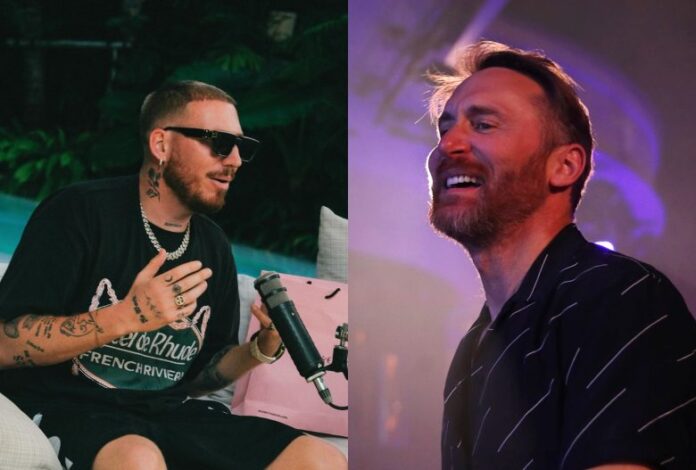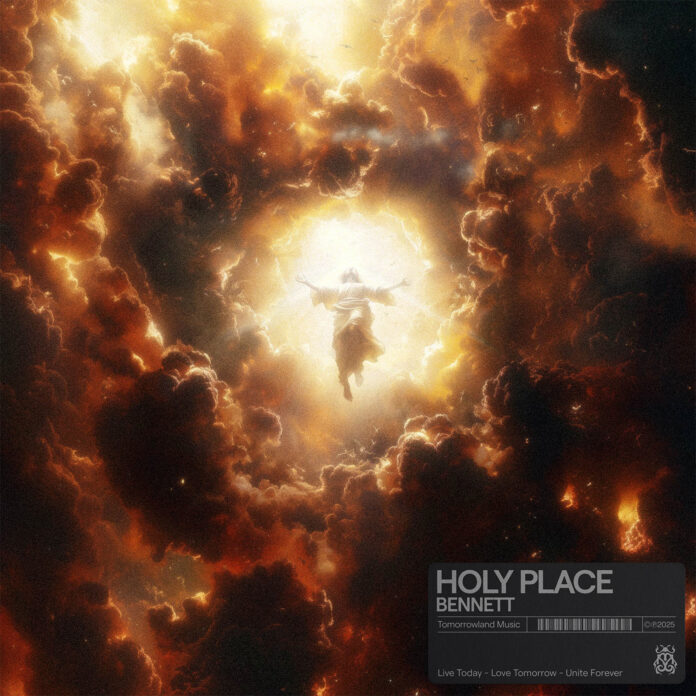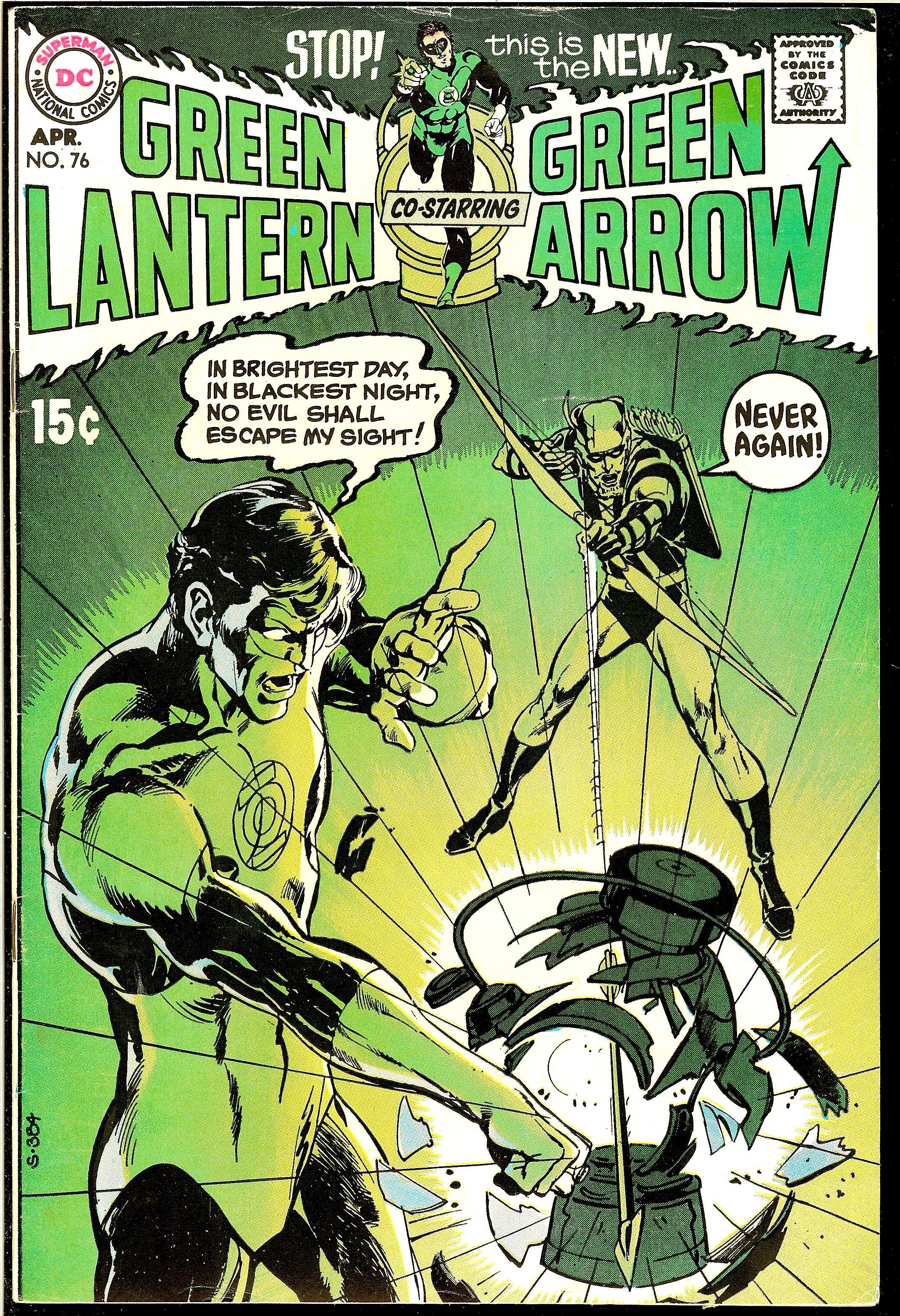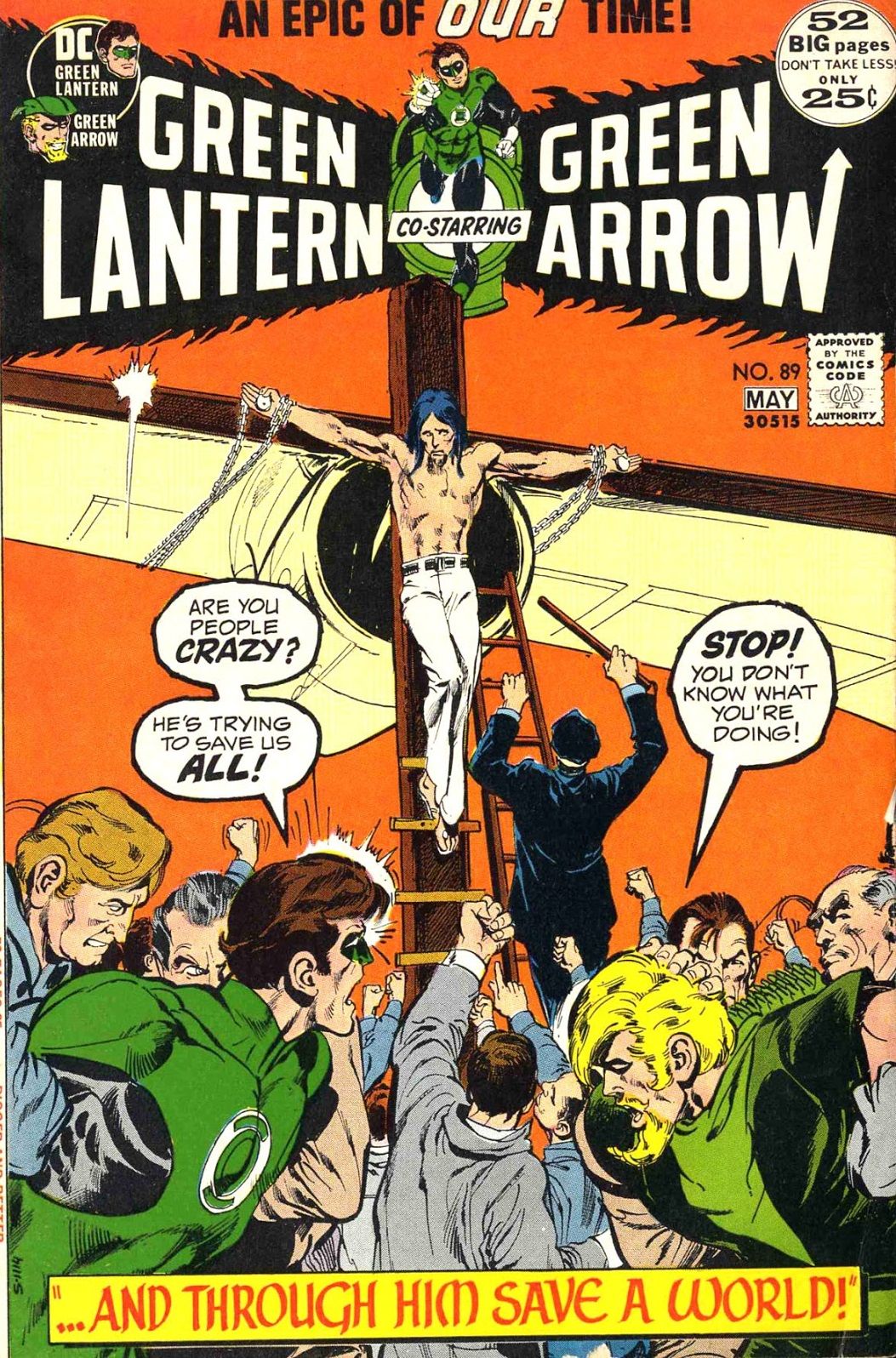In the latest Comic Book Legends Revealed, discover whether Neal Adams and Denny O'Neil's Green Lantern/Green Arrow really sold too poorly to continue
Welcome to Comic Book Legends Revealed! This is the eight hundred and thirty-seventh installment where we examine three comic book legends and determine whether they are true or false. As usual, there will be three posts, one for each of the three legends.This time around, it's all Neal Adams legends!
NOTE: If my Twitter page hits 5,000 followers, I'll do a bonus edition of Comic Book Legends Revealed that week. Great deal, right? So go follow my Twitter page, Brian_Cronin!
COMIC LEGEND:
Green Lantern/Green Arrow was selling poorly when it was canceled.
STATUS:
I'm Going With False
This is really one of those weird deals where I have never actually gotten around to actually writing about it because it's really hard to truly prove it one way or the other, even if I'm pretty darn sure that it's true, but you know what, especially in the wake of the tragic passing of the great Neal Adams, I think it would be nice to celebrate the fact that there is probably enough evidence to support at least this one specific instance of what was likely a much larger trend in comic books.
As I assume you already know, in 1970, Denny O'Neil and Neal Adams took over Green Lantern, adding Green Arrow to the book and making it a socially conscious book that saw the two heroes traveling across America (initially with a member of the Guardians of the Universe) to see how the country ticked (I covered the kick-off of the run in my regular retrospective series, Look Back).
It was a very ballyhooed comic book runs and sales on the book were initially quite good. However, the book was eventually canceled in early 1972, just roughly two years after the ran began (I wrote about the finale, as well).
WHY WAS GREEN LANTERN/GREEN ARROW SAID TO HAVE BEEN CANCELED?
Jon B. Cooke interviewed Carmine Infantino, DC's Publisher at the time, about the end of the series in TwoMorrows' Comic Book Artist #1:
Cooke: Did you push relevance as a trend?
Infantino: You're talking about Green Lantern/Green Arrow, aren't you? That book was dying, so I told Julie to do what he wanted with the damn thing-and I believe it was Denny and Neal's idea to come up with the idea of Green Arrow and the Black Power sort of thing; that's what kicked it off. We did some other things in there but we had to be careful because we had to remember that comics were entertainment. You could put out some intelligent stories but you had to be quite careful.
Cooke: Why was Green Lantern cancelled?
Infantino: Probably for the same reason other books were cancelled-they didn't sell-in this case, the artist being very late. We had to cobble up the next-to-last issue out of reprints almost overnight. It was a marginal book and the printer's late fees killed the book.
And that just seems to be the most logical thing on the face of it, right? The book wasn't selling, so they canceled it (in this particular instance, Adams was also not being able to do the book as a regular series, which also led to them canceling it). That certainly sounds logical, but in this particular instance (and likely in many other instances) it was probably not the case.
WHY WAS GREEN LANTERN/GREEN ARROW REALLY CANCELED?
Neal Adams discussed this many times over the years, but here's one from Allen W. Wright's brilliant Robin Hood website:
Adams: So one day when I realized that Denny O'Neil and I were probably coming to the end of the line with the Green Lantern / Green Arrow books, because one they weren't selling well. Or else the perception was that they weren't selling well, but in fact what was happening was there were teenagers all over America that were buying comic books out of the back of the wholesalers, and those books were being called destroyed, because the industry had gotten into doing this 'affidavit return' policy. So that they didn't have to return the [unsold] books or even slice off the titles. They would just depend on the local distributor to say they had destroyed the comic book. Well, local distributors were not destroying the comic books, they were selling them to teenagers out of the back of the distributor's shop for seven cents [cover price was 15 cents]. And these kids would then take those comic books by their favourite artist -- or the artist that would sell like Berni Wrightson and myself and Barry Smith and all those folks and they would sell them to their friends at motels or in their father's garages. Sell them to the neighbourhood kids for two dollars and five dollars according to what the quality was, because those kids could not find those comic books in their neighbourhood, because these kids were buying up them up out of the back of the wholesaler. And those kids who did that became the first tier of direct sales market comic book stores.Wright: Which is what industry is today.Adams: That's right. Those guys are still around. Not all of them, many of them died. You just have to look at the guys wearing the jeans jackets and silver hair with pony tails and leathery skin and those are the guys that began the direct sales market by buying comic books out of the back of the wholesalers and the wholesale reporting them as being destroyed. So when DC Comics said "Gee, I don't understand, Neal. Everybody's writing letters about Green Lantern/Green Arrow, everybody loves it, college students are writing letters, high school students are writing letters, but it's not selling that well. I don't understand." Well, it was selling like hotcakes -- like hotcakes. I sign, when I go to conventions, mint condition copies of those books. Because people put them in boxes and store them away and sell them. You can buy those books for as much as $400 a copy now. You've got very smart people who are storing that away or selling them for $2 or $5 in those days. It was a very corrupt and very strange business, and the direct sales market -- the no-return market -- saved it, but they saved it because they had corrupted it.
And that's the basic gist of the story. As distributors agreed to affidavit returns, the local distributor no longer even had to return the stripped covers of the books, you just said, "We sold X" and went from there. When you couple that with the burgeoning back issue market of the late 1960s/early 1970s, it just seems pretty plainly clear that at least SOME books (likely MANY, but at the VERY least SOME books) were beign sold directly to "dealers" (often just teenage fans) who would then sell them themselves, at either shows or schools or whatever. As Adams notes, this is basically how the direct market began, as some of these dealers basically just told DC, "Why not simply sell it to us directly?"
Bob Beerbohm wrote a BRILLIANT article on this topic in TwoMorrows' Comic Book Artist #6 and #7 (#6 is the one that's more specifically about Adams' issues) that details things even further, and he makes a very good case for this being a very widespread thing affecting many other comic book titles (including Adams' X-Men run and Jack Kirby's Fourth World books), and I think he is almost certainly correct, but whether he is correct in the macro or not (and, again, he almost certainly is), he is DEFINITELY correct in the micro when it comes to Green Lantern/Green Arrow.
I mean, come the heck on, they were literally releasing mass market paperbacks of the run WHILE THE RUN WAS GOING ON...
and yet it wasn't selling well enough to keep going? It just doesn't pass the smell test. Over the years, people have specifically asked me more speculative stuff about, like, the Mafia commandeering trucks carrying issues of Green Lantern/Green Arrow so that they could steal them and sell them and, hey, who knows? I doubt it, but who knows? But what I think we likely DO know is that Green Lantern/Green Arrow was not selling so little that the printer late fees were making the book no longer profitable.
Infantino once noted that Batman comics were selling at a nearly 100% success rate during the Bat-mania of the Batman TV series, so why didn't THOSE books disappear like the Green Lantern books (Beerbohm covers this in his excellent Comic Book Artist article) and it seems like it is just two very different things, as the Batman books were selling to the mainstream audience, while these Neal Adams' books were part of a back issue market that really blew up AFTER the Bat-Mania period (perhaps even BECAUSE ot the attention that the comic book world received FROM Bat-Mania), plus the affidavit returns policy, plus a change in DC's executive leadership, I think that there's enough there to support likely MANY examples of books selling seemingly worse than they really did, but at the very, very least, it seems to obviously have affected Green Lantern/Green Arrow, hence me saying that Infantino's take is "false" (quotes because it is likely more that he just didn't know than he was lying or anything like that).
Go get a copy of Comic Book Artist #6 and 7! Beerbohm's articles are a must-read for fans of comic book history!
SOME OTHER ENTERTAINMENT LEGENDS!
Check out some entertainment legends from Legends Revealed:
1. Was Denise Crosby Fired From Star Trek: The Next Generation Because She Posed in Playboy?
2. What Was Michael J. Fox’s “Revenge” Against Brandon Tartikoff For Tartikoff’s Original Hesitance to Cast Fox in Family Ties?
3. What’s the Secret Origin of Scooby Doo?
4. Was “Unchained Melody” Actually the Melody to the Film Unchained?
PART TWO SOON!
Check back soon for part 2 of this installment's legends!
Feel free to send suggestions for future comic legends to me at either [email protected] or [email protected]





